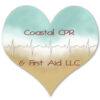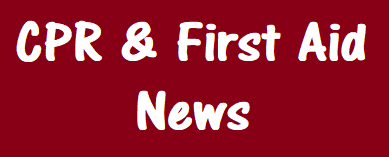
Winter weather and the class schedule

While the past few winters have been mild, it looks like we might get some snow in 2024! So here’s what our class schedule plan is for this winter.
This year we’re trying a new class schedule, classes are on a 2-week alternating schedule. On week 1 the weekday amd evening classes are on Tuesdays and Thursdays. On week 2 the weekday and evening classes are on Mondays, Wednesdays, and Fridays. If we have to reschedule a class due to weather, it will automatically reschedule to the same day and time the following week. Course participants can choose to transfer to a different scheduled class if that fits their schedule better.
Private classes will be rescheduled to the same day/time 2 weeks later or to a new date as needed.
If we decided to delay the start of a class due to weather it will begin 90-minutes to 2-hours later.
How do we decide to reschedule or delay the start time of a class due to weather? If the schools in Portsmouth and Hampton cancel, we will reschedule the class. If the schools have a 2-hour delay, we will delay the start of the class by 1.5-2 hours – it will depend on the weather conditions. Our philosophy is that if the roads are not safe for school buses to be on them, it’s probably not a great idea for our instructors and course participants to be driving. We know some course participants drive quite a distance to get to our classes and we want you to be safe.
Here is our official weather policy: https://coastalcpr.com/rescheduling-classes-due-to-weather/
In Memory of Lt. Charles Gallant
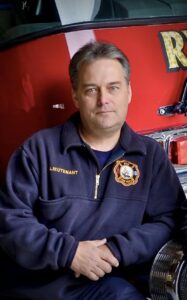
Last Alarm 12/14/2023
This past week we said goodbye to a colleague and friend.
Lt. Charles Gallant was a member of Rye Fire Rescue and Rye Professional Firefighters Local 4411 for 20 years. In addition to his myriad duties at the fire station, Chuck was also an active community volunteer. He organized the annual Rye Holiday Parade, helped organized the Rye 400 celebrations, and volunteered with charitable events such as the MDA boot drive and the ADA Tour de Cure. Chuck organized and ran the Rye Firefighters Toy Drive for years, working tireless this past year to gain recognition for the Rye Toy Bank as a Charitable Organization with the State of New Hampshire.
Chuck was also a BLS Instructor. Often teaching class accepting only donations to the Rye Toy Drive as his payment. We never taught together, and our teaching styles were different, but his commitment to the community was his top focus. Chuck leaves behind shoes that will be difficult to fill.
If you had an upcoming class scheduled with Chuck, or need to schedule a class, please reach out to us at 603-601-6138. We will do our best to try to help cover your class. We will also be donating a portion of the course charges to the Rye Toy Bank in Chuck’s memory.
If you recently took a class with Chuck and have questions on your course or eCards please contact his Training Center, Exeter Hospital, at 603-580-6534 or email mnickerson@ehr.org.
Donations to the Rye Toy Bank can be dropped off at the Rye Fire Station, 555 Washington Road, Rye, NH 03870.
Safety First 2023
About a week ago a lot of people realized the importance of CPR and using an AED.
I haven’t posted about the Bengals/Bills football game and Damar Hamlin’s cardiac arrest. I’ve seen a lot online. Quite a few instructors are using it as an example as to why you should take a CPR AED class. I’m not one to take advantage of someone else’s emergency for my own gain so I haven’t posted until now. I’ve seen a lot of posts and comments that I have not replied to, because, well… I didn’t want to get dragged into a conversation that I didn’t have time to fully respond to. But here is some info I thought I’d share.
Do I think a lot of posts about taking a CPR AED class are a good idea? Yes! Of course I think taking a class is a great idea! Just make sure your class is hands-on and not just online. It can be with us or any other awesome instructor. Personally I think EVERYONE should know how to do CPR and use an AED. But I also know that not everyone can or is able to.
Which is more important… CPR or using an AED? Both! Both work together! It’s not CPR or an AED… it’s CPR AND an AED. The 2 work together. CPR – Cardio Pulmonary Resuscitation does the work the heart isn’t able to do. It moves blood and oxygenated blood through the body keeping the brain and important body functions working. The AED – Automated External Defibrillator – delivers an electrical shock that stops the hearts electrical short circuit so that it can restart with the correct electrical rhythm. AED’s don’t start the heart – they stop it so that it can restart correctly. Providing CPR and using an AED together is important!
What caused Damar’s heart to stop? I’m a CPR instructor and a former EMT-I, not a cardiologist. I could make some educated guesses, but an official statement from his medical team would be a better answer than asking me or asking online.
What should people do next? It looks like a lot of folks have donated to Damar’s charity which is awesome! I would think that Damar would also support donations to organizations that support CPR AED training and Cardiac Arrest Support such as the American Heart Association or the American Red Cross or the Sudden Cardiac Arrest Foundation. You could also look at local youth programs in your community. Does your High School have an Athletic Trainer and CPR/AED trained coaches? Do your local schools or recreation fields have trained staff and access to an AED? Cardiac arrest can affect people of all ages, including healthy kids and young adults. In most communities they are working on their budgets for this current year. Does your city/town/municipality include CPR AED or First Aid training for teachers, recreation staff, coaches and other volunteers? If you’re not sure – ask! How can you help them to make sure their staff or volunteers are trained and have access to an AED?
How much does it cost to take a CPR AED class? It varies depending upon where you are, the certifying organization, and the equipment an instructor uses. Each organization that provides certification, such as the American Heart Association, American Red Cross, Health and Safety Institute, Emergency Care and Safety Institute, National Safety Council, and more; all charge fees to instructors to provide their programs. Plus an instructor has out of pocket costs for course supplies such as first aid materials, CPR manikin parts, and more. I can’t give you a price for all courses, but you can check our prices on our class info page.
Why should you take a CPR AED class? Well, because Heart Disease is the #1 cause of death worldwide. Despite coming out of a global pandemic, we are all most likely to have heart disease than any other disease or illness. Heart disease does not discriminate based on age, gender, or race. Anyone can have heart disease or suffer a traumatic cardiac arrest. If someone in your family collapsed… would you want to know what to do? If someone collapsed in line next to you at the store… would you want to know what to do? If someone in your family collapsed somewhere… would you want someone nearby who knew what to do? If the answer to any of these questions is YES … then you should take a CPR AED class.
Where can I find a CPR AED class? You can click on my Class Schedule link. You can also go to CPR.heart.org and click on find a class or visit www.redcross.org/take-a-class and enter in a class type. You can also check with your local hospital, fire department, recreation department or search online for a local class.
I wish the best to Damar Hamlin and his recovery. I am sure I am not alone in wishing that this had never happened to him.
No one wants to hear that their family member has suffered Sudden Cardiac Arrest. In almost every class I teach I emphasize to my course participants that early action – recognizing cardiac arrest, calling for help, starting CPR – is the best actions that we can all take. If the basics, such as CPR, aren’t started quickly – it won’t matter how well trained the paramedics are or how skilled the hospital staff may be. They won’t have a viable patient to work on if lay providers haven’t done basic CPR or used an AED. The basic steps of CPR are the beginnings of the chain of survival – all other advanced interventions cannot be successful if basic CPR hasn’t been performed quickly. Knowing how to do CPR and use an AED, or following the directions from 911 can make the difference for survival from Sudden Cardiac Arrest.
What is one thing you can do to help prevent or treat Sudden Cardiac Arrest in your community?
We’re hiring!
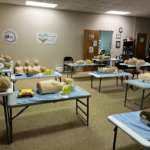
Do you want to help save lives? Do you want to be part of the chain of survival and helping to train people to help others in an emergency? You can do so by teaching lifesaving skills!
We teach people how to save lives, and are looking for instructors to help us to do that! Are you a BLS or First Aid CPR AED Instructor looking to teach more? Are you looking to become an instructor to teach at our Training Center? Let’s see if we are the right fit for each other!
We are hiring Per Diem BLS, CPR AED, and First Aid Instructors to teach at our Hampton, NH Training Center and for our clients in the Greater Seacoast Area. This is a per diem part-time hourly non-benefits eligible position. We are currently hiring to fill 4 positions.
Instructors will teach 1-6 (or more) classes each month and are classified as part-time hourly employees. Class schedules are flexible, there will be a mix of daytime, evening, and some weekend classes. Ideal candidates will have a flexible schedule that will allow them to teach as much or as little as they want, however instructors must teach at least 1 class each month.
Interested applicants who are not currently certified as instructors are welcome to apply. We will provide training along with an employment contract. This contract will include training as well as required classes to teach for a minimum of a 3-month period. Please email us at jobs@coastalcpr.com with any questions you may have.
Interested applicants will need to fill out a job application form here: https://forms.gle/LLz5KWk2AXAymz7S8
Detailed job descriptions can be found here:
BLS Instructor job description
First Aid CPR AED job description
Starting pay for First Aid CPR AED Instructors is $20 per hour. Starting pay for BLS Instructors is $25 per hour. There is a 6-month probationary period and increases may be given after the probationary period ends.
All instructors are welcome to teach their own classes outside of the Training Center.
Coastal CPR & First Aid, LLC is an EEO employer registered with the State of New Hampshire.
We’re excited to meet you and have you join our team!
Website updates

Welcome to our new website! It’s still a work in progress, and long overdue.
Over the past weekend and into the upcoming week will be updating the website. Occasionally you might have trouble finding something, but at this point the class schedule and registration should be up and running.
We’ve switched registration platforms as well. This system integrates into our website differently and we’ve added new webpages to divide the course catalog so you are not overwhelmed with a page of icons or bullets for every single class we offer. We have separate pages for
- Healthcare Provider – BLS, ACLS, and PALS
- Lay Provider – CPR AED, First Aid, First Aid CPR AED, and Pediatric classes
- Other programs and workshops – Babysitting (new program coming this fall!), OSHA, Badge Programs, Customizable programs and workshops, and more!
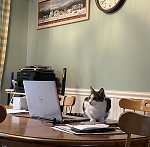
In addition we set up a new email: Classes @ CoastalCPR.com for class inquiries and communication. And well, to cut down on the growing amount of spam mail we receive.
As you can see, our web designer Isla has been hard at work.
But if you can’t find what you’re looking for, or if links are working correctly please let us know by emailing or calling. Isla is working hard on it, but does take occasional cat naps.
New technology in the classroom

When I started teaching I used a flat panel TV with a built in DVD player. If I’ve traveled to your organization to teach a class you’ve probably seen it. I still use it as it’s quick to set up and play the course video.
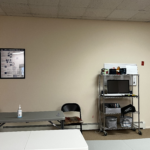
But in the classroom I’ve been using a large flat panel computer with a DVD drive. This has worked super well for the past 3 or so years. But over the past few months the computer has displayed the blue screen of despair a few times in the middle of a course. I have the TV/DVD as a back up, but the screen was a little smaller and with everyone spaced out in the classroom I began looking for something new to play the class videos.

And then one of my favorite times of the year comes around… Amazon Prime Day!
Last year I totally took advantage of Amazon Prime Day to buy Alen, our air sanitizer. Alen has been keeping the classroom air clean and healthy for just over a year now.
This year it was go big or go home… and we took advantage of some stellar deals!
New to the classroom is an Amazon Fire TV for watching course videos and a Samsung Smart Monitor for viewing QCPR feedback from the manikins, and also to display any other course materials.

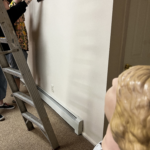
Many thanks to my family for coming over and helping to install these on the wall. I could not have done it all alone and your help was greatly appreciated!
We still need to adjust cables, set up the Fire Stick (not included but just arrived on the Amazon truck yesterday!), and clean up the wall a bit more. But 2 classes in and the larger screens and mirroring the iPad to the monitor made viewing everything so much easier. Currently we have 6 stations in the room, and the view from the back will be much better.

Come check out our new video set up! You can register for any upcoming course by clicking on the Class Schedule link on the top menu of this page.
How long do you do CPR?

This is a question I get asked a lot, and usually the question involves a real or fictious story.
I don’t have an exact answer to this question. And most CPR instructor won’t have an answer either.
It’s not because we don’t know, it’s because there isn’t a perfect answer.
There are so many things that factor into how long a resuscitation should be. How long has the person been down? How far are you from advanced help? How many rescuers are involved? Where are you physically located? What precipitated the collapse? I could come up with more questions to consider, but I think you get the point.
In general my answer is you continue until:
- They wake up
- Someone else arrives to help
- Someone brings you an AED
- The ambulance arrives
- You are too tired to continue
I was reminded of this question recently when I saw this story: Hiker dies on Jewell Trail. Hikers found an unresponsive hiker on the trail, they started CPR and called for help. 2 different rescue organizations responded and the Cog Railway transported rescuers up to near the trail. Once the victim was discovered all the steps that needed to be taken were taken. Unfortunately the victim did not survive. This was not due to the efforts that were made, hikers and rescuers performed CPR for 40 minutes. If you’ve been in a CPR class you know that performing chest compressions is hard work. If each rescuer switched off every 2 minutes as recommended in the guidelines it would mean that the rescuers performed multiple sets of compressions; unless there were a lot of rescuers. These same rescuers would also need to carry the victim off the trail, which is also really hard work.
There were most likely a lot of factors that we don’t know from this news story. Not every CPR story we see is a successful one. But the original group of hikers started the chain of survival by starting CPR and calling for help. They did what they could in the conditions they were in and not knowing how long the hiker had been unresponsive on the trail. Making the decision to stop CPR is difficult, but sometimes it’s the right thing to do.
A new purpose for an old Resusci Anne
A month or so ago I saw a post in a local Facebook group from the Albacore Museum, they were looking for a donated or loaned manikin to display some recently donated uniforms. The museum is located at Albacore Park on Market St Extension in Portsmouth, NH. It’s a small but nice museum and you can tour an actual submarine – the U.S.S. Albacore. Dating myself here, but I remember when they dug up Market Street Extension to float the submarine in to create the park.
Since I’ve been recently adding to my inventory, I reached out to them. Temporarily I loaned them the torso of a Prestan manikin. It was smaller than what they were looking for and I think they were hoping to keep it. But I told them I’d find them something better that they could keep. They were looking for just a manikin torso to display some recently donated uniforms from a local sailor who had perished when the U.S.S. Thresher sank off the coast of Cape Cod.

If you’re interested in Naval History, you can read about the U.S.S. Thresher on the Navy’s History Website. The Thresher was commissioned and sailed out of the Portsmouth Naval Shipyard and unfortunately had an emergency and sank, taking her crew with her. Annually the City of Portsmouth and the Portsmouth Middle School Band have a ceremony just before Memorial Day at Prescott Park, overlooking the Portsmouth Naval Shipyard and there is a Memorial for the Thresher crew located in Kittery, ME.
Recently I received some donated equipment, which included a very well used Resusci Anne torso manikin. This manikin was extremely well used, and would never really be able to be used in a class. But I really didn’t want to put her in a dumpster either. So I contacted the nice folks at the Albacore Museum.

They were thrilled that we could donate a manikin they could keep. It was snug fit, but they were able to place the uniform on her and install her in their display case.
When the weather is a little cooler we’ll come back to tour the museum and the submarine. We visited years ago when the kids were little, and touring a submarine in the summer is not for the faint of heart as it is HOT inside. Most likely very similar to what our sailors experience. I’m thrilled to give this Resusci Anne a new purpose and job to perform. She was used for decades to teach life saving skills and now can proudly wear an historical naval uniform to educate viewers on the life of a local submariner.
Is your AED FDA approved?
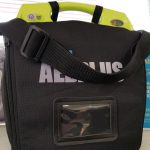
On February 3rd 2022 several AED models lost their FDA approval. Is your AED on this list?
| Cardiac Science 9200 | Physio-Control Lifepak 12 |
| Heartsine 300P | Physio-Control Lifepak 20 |
| Philips FR2/FR2+ | Physio-Control Lifepak 500 |
| Philips Forerunner | Welch Allyn AED 10 |
| Philips Heartstart XL | Zoll M Series Defibrillator |
| Philips Heartstart MRx | Zoll E Series Defibrillator |
What this means if your AED is on this list … You will no longer be able to purchase replacement pads or batteries for your AED. The manufacturer will no longer provide support for it.
What you need to do next … You will need to replace your AED. You don’t need to replace it immediately, but you’ll need to do so before the pads or batteries reach their expiration date.
If you are in the State of New Hampshire please contact the NH AED Direct Purchase Program for purchasing information. The NH program is offering several brands of AED’s for a discounted price.
If you are not in New Hampshire please contact us for AED purchase options. We have partnerships with AED vendors and are often able to pass along those savings to you.
My AED is not on your list, is it okay? Yes! But you can also view the list of FDA Approved AED’s.
Why are some AED’s no longer approved? In 2015 the FDA published an order requiring manufacturers to file premarket approvals (PMA) for all AED’s and related supplies within 90 days. However they did not intend to enforce this for 60 months after the final order. The order went into effect on February 3, 2020 and the deadline for manufacturer’s to file their PMA was further extended due to the pandemic to February 3, 2022.
You can read the full information on the FDA AED webpage.
Review, Refocus, Reset: Ready to Boss Up Conference

I am SUPER EXCITED to be part of the Review, Refocus, Reset: Ready to Boss Up Conference on January 19th and 20th. Attending conferences is not something I get to do that often as they usually involve plane tickets or hotel rooms, neither of which is really in my budget. Pretty much if I can drive in my van I’ll go, but otherwise I don’t.
But over the past few years there has been an increase in virtual events. This has allowed me to attending workshops, webinars, and even conferences. I’ve been able to network with other instructors and I’ve really learned a lot.
For the Review, Refocus, Reset: Ready to Boss Up Conference I’m actually presenting at one of the sessions! My topic – Perfecting your Pricing, aka … what to charge for your classes. Class pricing is a topic that comes up A LOT in online instructor forums, and there is no one set price that everyone should charge. I have a formula that I use that I’ll be sharing as well as discussing other methods to figure out how to price a class.
I have 2 handouts for this workshop I’m posting here for anyone who needs them.
Perfecting Your Pricing pre-session handout
Perfecting Your Pricing handbook
I’m curious, if you’re an instructor – do you use a formula to calculate course charges? What method do you use?
If you’re a potential course participant – what does the cost of a course mean to you? Does the price present the value or worth of the course, the material/subject covered, or the instructor?
Feel free to post a comment or email me.
Over the past few months I have been switching over to the new eCards from the American Heart Association. They’re digital, can be emailed directly to the class participant, and everyone receives their certification card a lot more quickly.
There are a few steps each recipient needs to take to claim their card though, so I’ll go through all the steps here.
It starts off with the roster. When you arrive for your class you need to print your name and email address clearly on the roster form. Also fill in your address and phone number. Your instructor might not need your mailing address, but a phone number is helpful. I know if I can’t read your email address I might need to call you to confirm it so I can send you your eCard.
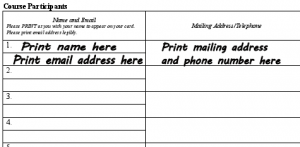
After the course, your instructor needs to submit the roster to their AHA Training Center or Training Site to have the card issued. I issue my own cards on behalf of my Training Center, and I usually do them within a few days of successful course completion.
You’ll receive an email from ecards@heart.org with a link to your card. This link will take you to a Student Profile webpage, please make sure all your information is listed correctly on this page. If it is not contact your instructor right away to have it corrected. Updates can be made later, but it’s best to do them right away. You will create a login and password after viewing this information. This will give you access to log in to re-download or email your eCard at any time until the card expires.
After you create your login and accept the terms and conditions of the site you’ll receive a survey. It’s up to you if you want to fill it out or not, there are links to submit or skip the survey at the end.
After the survey your eCard will display. There are 2 versions; a certficate and a card. You can download, print or email your cards from this screen.

The card looks pretty much like your previous paper card, except it has a QR code on it. The certificate has the corresponding QR code and a certificate number. Your employer or anyone needing to verify if your card is valid or not can scan the QR code or verify your certificate number at https://ecards.heart.org/student/myecards. You can also visit this site and login to view or re-download your card whenever you want. It’s important to note, no one can verify your card if you have not claimed it. So you need to do all of the above steps.
And that’s how the new AHA eCards work!
A few important notes and hints:
- Your instructor cannot claim your card for you. Nor can they print it off for you. They can’t even view it online until you claim it.
- The card has to be sent to the course participant. It can’t be emailed to your employer.
- If you do not receive your eCard within a week or two, email your instructor. Some firewalls may block the eCard email or your email address may not have been clearly printed on the roster form. The eCard website does not notify the instructor if an email bounces or is blocked.
- If you do not have an email account, the AHA recommends creating a free account such as gmail, hotmail, outlook, or yahoo.
- If you do not have access to a printer, the AHA recommends printing at your local library.
- If you’re printing the eCard to put in your wallet, use thicker paper so it will hold up longer.
- Email a copy to yourself. Open and download on your phone so you’ll have a digital copy with you wherever you go.
